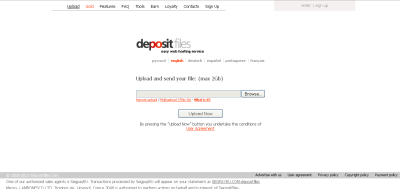
- FILE SECURE FREE 1.4.0 INSTALL
- FILE SECURE FREE 1.4.0 DRIVERS
- FILE SECURE FREE 1.4.0 PORTABLE
- FILE SECURE FREE 1.4.0 SOFTWARE
- FILE SECURE FREE 1.4.0 PASSWORD
This screen shows the installation progress. The response file collects and stores all the information that you have entered, and enables you to perform a silent installation (from the command line) at a later time.
If you want to save these options to a response file, click Save Response File and enter the response file location and name. Use this screen to verify installation options you selected. To ignore the error or the warning message and continue with the installation, click Skip (not recommended). Fix the error and click Rerun to try again. If any prerequisite check fails, then an error message appears at the bottom of the screen. To view the list of tasks that gets verified, select View Successful Tasks. This screen verifies that your system meets the minimum necessary requirements.
FILE SECURE FREE 1.4.0 INSTALL
To install in collocated mode, you must have installed the required dependant softwares. You can click View to verify and ensure that you are installing in the correct Oracle home.Įnsure that the Oracle Home path does not contain space.Ĭollocated mode is a type of installation that is managed through WebLogic Server. This Oracle home must include Oracle Fusion Middleware Infrastructure 12c (12.2.1.4.0). Specify your Oracle home directory location.
FILE SECURE FREE 1.4.0 SOFTWARE
Select to skip automatic updates, select patches, or search for the latest software updates, including important security updates, through your My Oracle Support account. Review the information to make sure that you have met all the prerequisites, then click Next. This screen does not appear on Windows operating systems. See About the Oracle Central Inventory in Installing Software with the Oracle Universal Installer. Make sure that the operating system group name selected on this screen has write permissions to the central inventory location. Specify the location where you want to create your central inventory. On Linux or UNIX operating systems, this screen opens if this is the first time you are installing any Oracle product on this host. Path to the Configuration Wizard for domain creation and configuration.
FILE SECURE FREE 1.4.0 PASSWORD
Password for the database schemas used by Oracle Access Management. Prefix for names of database schemas used by Oracle Access Management.

Path to the Repository Creation Utility (RCU). Password of the user with Oracle WebLogic Server administration privileges. The default administrator user is weblogic. Name of the user with Oracle WebLogic Server administration privileges. Location in which your application data is stored.Īdministrator user name for your WebLogic domain home/Oracle/config/applications/idm_domain Location in which your domain data is stored. Port for Oracle WebLogic Server and Oracle Access Management consoles. Host name for Oracle WebLogic Server and Oracle Access Management consoles. This directory will include Oracle Fusion Middleware Infrastructure and Oracle Access Management, as needed. Password of the user with database administration privileges.ĭirectory in which you will install your software. The default DBA user on Oracle databases is SYS. Name of user with database administration privileges. Oracle databases require a unique service name. The default Oracle database listen port is 1521. Port number that the database listens on. Name and domain of the host where the database is running. Supports all major data wiping schemes, including: GOST R 50739-95, DOD 5220.22-M, Schneier & Gutmann.Table 3-1 Installation and Configuration Checklist InformationĮnvironment variable that points to the Java JDK home directory.


FILE SECURE FREE 1.4.0 PORTABLE
Easily wipe entire drives and portable devices.It supports right-click context menus within Windows file explorer, or can just be used as a standalone application. It can wipe entire drives, wipe files individually, and sanitize unused drive space.
FILE SECURE FREE 1.4.0 DRIVERS
Hardwipe can be used to permanently erase, or hard wipe data on drivers and portable storage media to prevent information from ever being recovered.


 0 kommentar(er)
0 kommentar(er)
